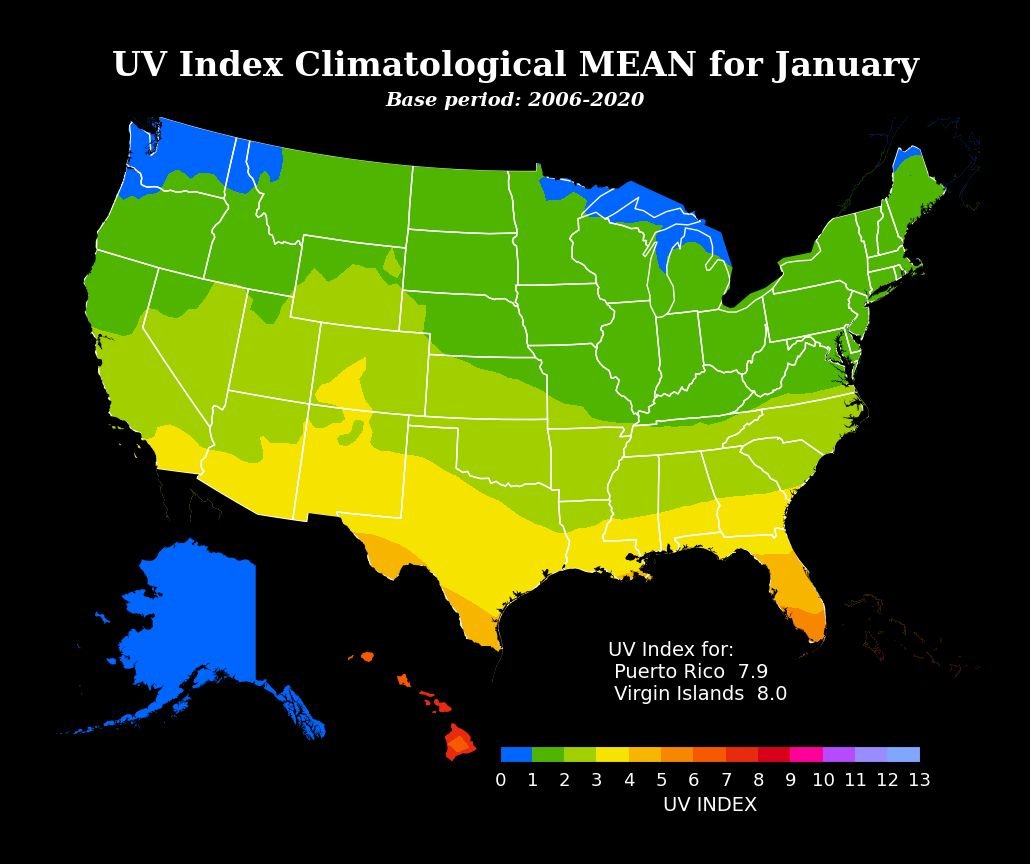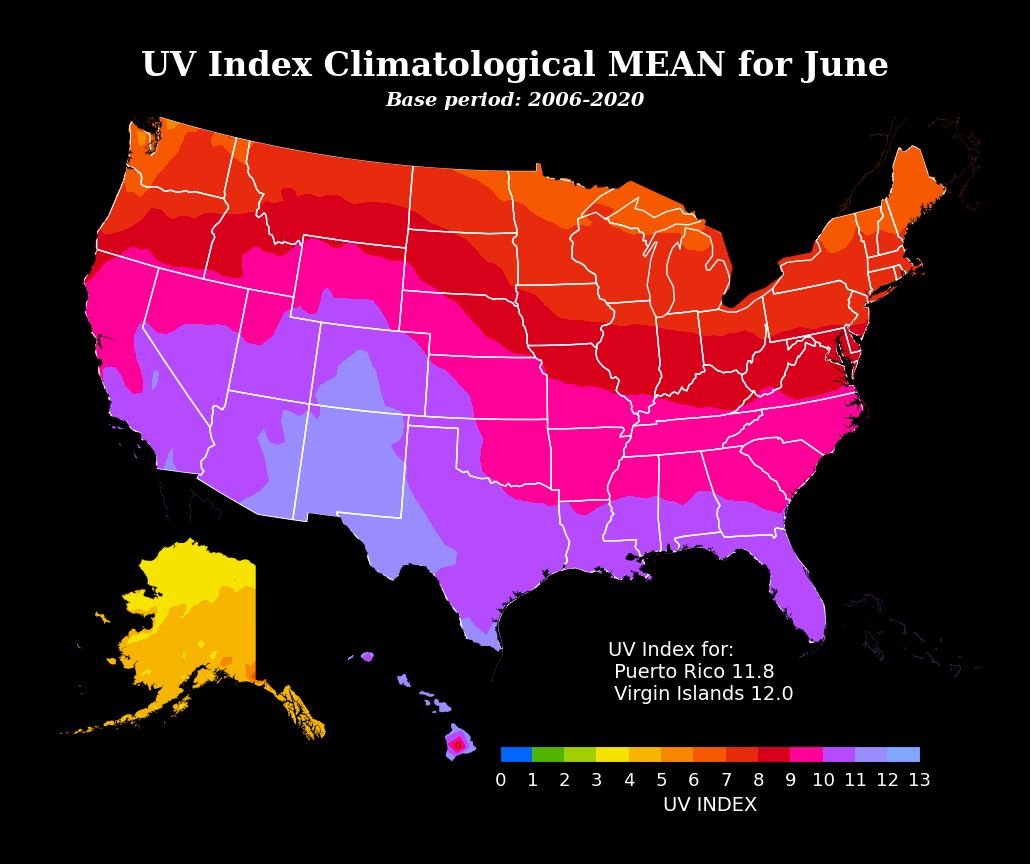Understanding the UV Index
Ultraviolet radiation is responsible for sunburns, skin aging, and it is the number one risk factor for skin cancers such as basal cell carcinoma, squamous cell carcinoma, and melanoma. The easiest way to minimize UV damage is to reduce UV exposure. The UV Index provides a beneficial resource to maximize fun outdoors while staying protected.
The UV Index Scale
The UV Index is displayed on a scale from 0 to 11+. As the numbers increase, so does your risk of getting a sunburn. An index of 0 indicates no UV radiation, as is essentially the case at night. An index of 11+, on the other hand, corresponds to midday summer sunlight with a clear sky. (Soure: Wikipedia) The UV Index levels are grouped into five exposure levels, which are explained below.
As recommended by the World Health Organization (WHO), UV Indexes are standardized globally. In the US, the UV Index is reported by the National Weather Service (NWS) and Environmental Protection Agency (EPA). For a global UV Index map, visit GRID-Arendal, a non-profit environmental communications center sponsored by the United Nations Environment Program (UNEP).
Low exposure (0-2) indicates minimal danger from the sun’s harmful rays, e.g. in the early mornings and evenings. It is safe to stay outside, but recommended to still use sunscreen, especially if you burn easily.
Moderate exposure (3-5) means low risk of harm from unprotected sun exposure for the average person. If you spend long periods of time outside, take precautions such as covering up and wearing sunscreen.
High exposure (6-7) indicates that protection against sunburn is needed. Reduce time in the sun between 11am and 4pm, especially if you’re fair-skinned. Wear protective clothing and sunglasses, and remember to apply sunscreen to sensitive areas like the nose, lips, and rims of the ears.
Very high exposure (8-10) means that unprotected skin will burn quickly. Seek shade, especially around noon. And don’t forget that surfaces like water, bright sand, or snow can reflect UV rays, amplifying their harmful effects.
Extreme exposure (11+) means a very high risk of harm from sun exposure. Unprotected skin can burn within minutes. Avoid being in the sun as much as possible and take all other precautions.
“Tip: Take a look at your shadow! Since the UV Index fluctuates throughout the day, peaking at noon, pay close attention to your shadow. The shorter your shadow, the higher your UV exposure if you stay in the sun.”
Why does the UV Index vary?
The intensity of the sun’s UV rays reaching the earth’s surface varies depending on a few factors, e.g. time of the year, time of the day, your physical location, and the weather conditions. All of these factors also affect the UV Index ratings.
Read our latest blog article: Frequently Asked Questions on UV Radiation
In the US, different parts of the country have different degrees of variation in the UV Index. For example, in Portland, Oregon, the average UV Index value during midday in winter is 1 (Low) whereas in Phoenix, Arizona it is 3 (Moderate). In summer, Portland’s midday average is 5 (Moderate) whereas in Phoenix, it is 10-11+ (Very high to extreme).
Image Source: https://www.epa.gov/sunsafety/sun-safety-monthly-average-uv-index
How to find out about the UV Index where you live
Since UV Index levels can vary greatly, it is important to stay informed. In many countries the UVI is reported along with the weather forecast in newspapers, on TV and on the radio. If you have an iPhone, check your Weather app, which comes preinstalled and indicates the current UV Index for all saved locations.
Project Sunscreen offers a free UV Index search tool to check your local UVI for up to three days, and the United States EPA has developed a free smartphone app that provides a daily forecast of the expected intensity of UV radiation from the sun.
We're here for you. If you have questions or would like to schedule an appointment, please call our office at 720.316.8091 or visit our Contact Page.


